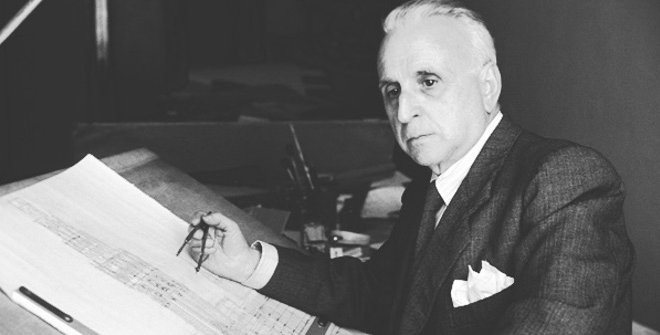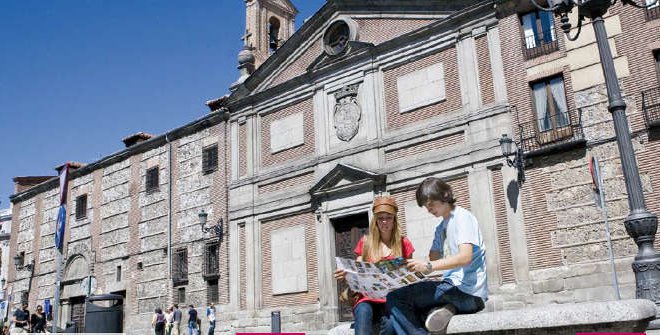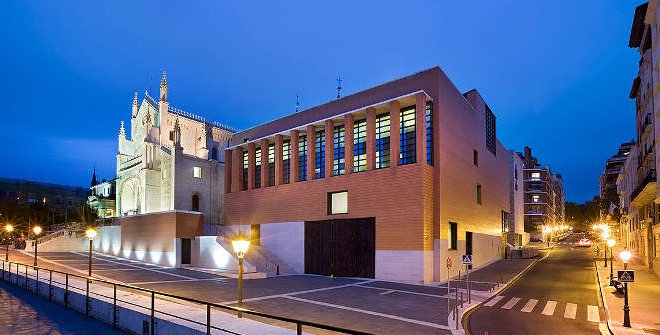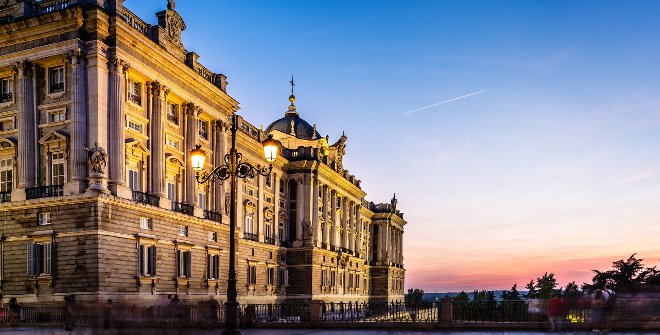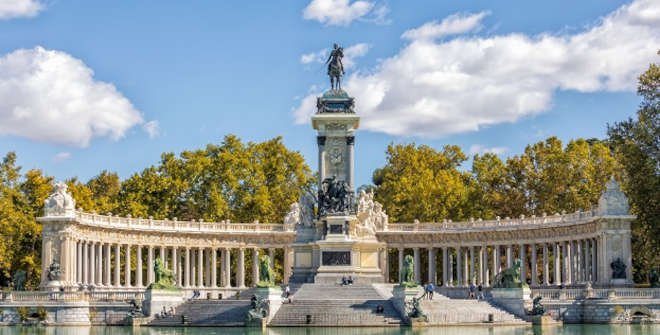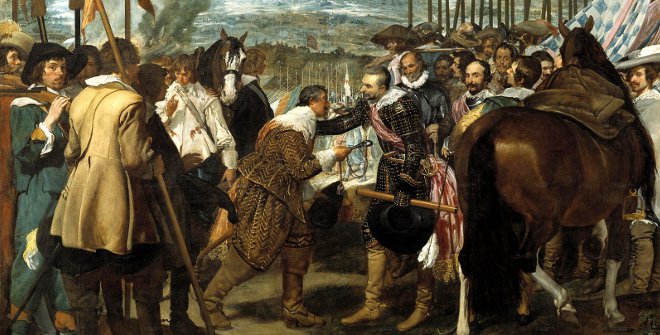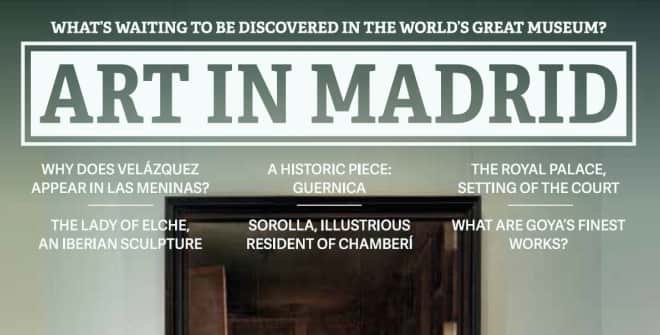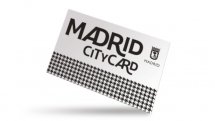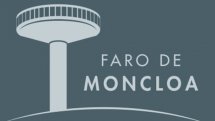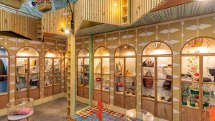Antonio Palacios’s Madrid
If it wasn’t for Antonio Palacios (1874-1945), Madrid’s skyline would be completely different. Born in Galicia in 1874, this extraordinary architect and urban planner created such unique buildings and spaces that his name has joined the likes of Ventura Rodríguez and Juan de Villanueva as one of the great creators of the urban landscape of the Spanish capital. A far cry from the architectural designs of his era, he made his mark along the area that goes from Puerta del Sol to Plaza de Cibeles, although his work also took him to the neighbourhood of Salamanca and, of course, to Metro de Madrid’s transit system. They say that Antonio Palacios is to Madrid what Antoni Gaudí is to Barcelona. Discover his major works:
Telecommunications Palace (No. 1 Plaza de Cibeles. Metro: Banco de España, L2)
Built from stone, iron and glass, the Telecommunications Palace, better known today as Cibeles Palace, is one of the most emblematic buildings in Madrid thanks to its spectacular, monumental white façade. Visitors to the capital are blown away by this magnificent structure in the heart of the city, which occupies 30,000 m2 of the former site of Buen Retiro Gardens. Today, it’s the seat of Madrid City Council. It’s also the home of CentroCentro cultural centre, a lively and vibrant space open to the public that’s dedicated to contemporary art, but which was originally opened in 1909 as Correos y Telégrafos, the city’s post office and telegraph headquarters.
Círculo de Bellas Artes (No. 42 Calle de Alcalá. Metro: Banco de España, L2)
Located at the junction of the city centre’s two main thoroughfares—Calle de Alcalá and Gran Vía avenue—Círculo de Bellas Artes continues to have the same iconographic value in Madrid’s urban setting as it had when it was first built. On 8 November 1926, King Alfonso XIII inaugurated this cultural space with an exhibition of paintings by Ignacio Zuloaga. In the years to come, the multidisciplinary centre would be directed by the likes of Jacinto Benavente and Carlos Arniches. Picasso even came here to attend painting classes and Valle-Inclán was a regular in its halls. A visit to the rooftop terrace is a must: it’s crowned by a magnificent bronze sculpture of Minerva by Juan Luis Vassallo and offers a 360-degree panoramic view of Madrid. Be sure to check out the delicious gastro-cultural space La Pecera on the ground floor.

Former Hospital de Jornaleros (No. 17 Calle de Maudes. Metro: Cuatro Caminos, L1)
Opened in 1916 as Hospital de Jornaleros de San Francisco de Paula, Maudes Palace (also known as Maudes Hospital) was commissioned by a charity to provide free healthcare to Madrid’s journaleros, or day labourers, and so hence the name. Its white stone façade and the pinnacles and balustrades that feature on its towers are reminiscent of Cibeles Palace. Following many years of changes during which it was used as a military hospital before falling into decay and eventually being abandoned, in 1984 the Regional government of Madrid acquired the building. The church, however, which forms part of the huge complex, was not sold and to this day it still belongs to the charity. Following its restoration, the building now houses the headquarters of the Community of Madrid’s Department of Transport and Infrastructures.
Banco Español del Río de la Plata (No. 49 Calle de Alcalá. Metro: Banco de España, L2)
Known as the Caryatid Building, this is one of the most impressive projects by Palacios. It’s worth mentioning that he often worked alongside Joaquín Otamendi, although the latter is sometimes overshadowed by the legacy of the visionary architect. They did indeed combine forces and go all out when designing this building to be used as the main Spanish office of Banco Español del Río de la Plata. Opened on 29 April 1918, some of its architectural highlights include the four immense caryatides that flank the main entrance and the spectacular Ionic columns on the façade. Found at the junction of Calle de Alcalá and Calle del Barquillo, since the beginning of the 21st century it's been the headquarters of Instituto Cervantes, mainly being used for office space and to host exhibitions. Inside, it has an impressive glass dome and a vault in which manuscripts of the most important 20th-century writers have been stored since 2007.
Banco Mercantil e Industrial (No. 31 Calle de Alcalá. Metro: Banco de España, L2)
This bank headquarters was constructed between 1935 and 1943 to house Banco Mercantil e Industrial. Today, we can find the Regional government of Madrid’s Department of Culture and Tourism and the Alcalá 31 Exhibition Hall, where visitors can enjoy contemporary art displays. The building has two façades: one overlooks Calle del Caballero de Gracia, while the other faces out onto Calle de Alcalá. The latter stands out for its gigantic horseshoe arch which surrounds its long windows.
Antigua Casa Comercial Palazuelo (No. 4 Calle Mayor. Metro: Ópera, L2)
Inspired by Chicago-style architecture, this was one of the first commercial buildings to be erected in Madrid and, to this day, it still has the same purpose for which it was built in 1920: to serve as a space for shops and offices. A real highlight in the structure’s façade includes the Corinthian columns, among which we can appreciate several iron and glass enclosed balconies. It has a central courtyard with a marble floor and glass tiles, which is presided by an imperial staircase and a large stained-glass window, allowing light to shine through from above. Influenced by the same style, the architect later designed the beautiful Matesanz Building (No. 27 Gran Vía avenue), which was also used as a commercial space for shops and offices.
Private Homes
Palacios also conceived many homes for well-off families here in the capital, and each one had its own signature style. Such is the case of the house he built for Dr. Emilio Rey at Number 20 and 22 Calle de Viriato, or the apartment block found at No. 6 Glorieta de Quevedo. He also left his mark on the Count of Bugallal’s lavish home, located at No. 4 Plaza de Canovas del Castillo; the palatial Palazuelo building at No. 54 Calle de Alcalá, which is undoubtedly the architect’s largest private property project in Madrid; the house commissioned by Tomás Rodríguez at No. 3 Calle del Marqués de Villamejor, one of his first works in the capital along with the properties belonging to Luis Harguindey at No. 53 Calle de Serrano; and the adjacent homes commissioned by Luisa Rodríguez Arzuaga, at No. 1 Calle del Marqués de Villamejor.
Not forgetting his own modest home at No. 4 Calle de Cimarra in the Colonia El Plantío residential area, which differs from his other works in that it has a more simple and classic style; the Palace of Joaquín Otamendi at No. 9 Calle de María de Molina, a project that was overseen by Otamendi himself between 1911 and 1913; and the block of apartments found at No. 139 Calle de Alcalá.
Projects for Metro de Madrid
Antonio Palacios was involved in Madrid’s metro network, designing the Tirso de Molina and Chamberí metro stations as well as being responsible for the company’s diamond-shaped logo. He was also behind the original elevator structure which stood from 1920 to 1970 at the Gran Vía station, known as the Templete de la Red de San Luis. It was the architect’s solution to quickly getting up to street level after coming off the metro.
Chamberí Station (commonly referred to as the Ghost Station) and the Nave de Motores de Pacífico engine hall make up Andén 0: an exhibition space that’s open to the public from Tuesdays to Sundays. Andén 0’s Nave de Motores de Pacífico building takes us right back to the first years of Metro de Madrid. It was built to ensure the power supply to the suburban underground, which was in its early stages. Located right in the heart of the capital, at No. 21 Calle de Castelló, the building’s façade gives the false impression that it's a block of apartments for residential use.
Palacios also designed other facilities intended to guarantee the metro’s electricity supply, such as Pacífico Power Plant (No. 12 Calle de Gonzalo de Córdoba) and Quevedo Power Plant (No. 9 Calle de Olid).
The Year of Antonio Palacios: 150th anniversary of his birth
8 January 2024 marked the 150th anniversary of the birth of Palacios, one of the figures responsible for creating the Madrid that we can appreciate today. The Galician architect to whom, as we can see above, we owe many emblematic buildings is being honoured this year with several events that take a look at his artistic and professional career.
Celebrations kicked off at the end of 2023 at the Official College of Architects of Madrid (Espacio COAM) with the exhibition Antonio Palacios. El rumor de la historia, el ruido del tiempo (The Rumour of History, the Noise of Time), which focused on the architect and urban planner and his projects outside Madrid, mainly in Galicia.
